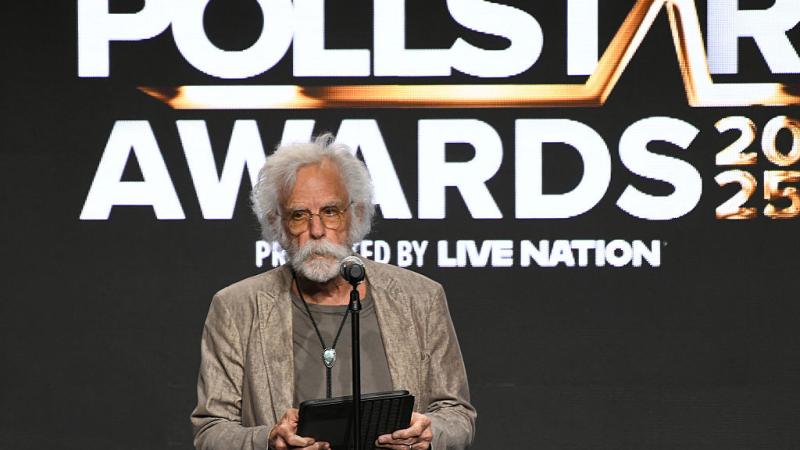Climate fiction is popular, but readers sometimes led to believe fictional portrayals are accurate
One popular title by Kim Stanley Robinson opens in 2025 with a heat wave killing 20 million people in India. For context, the average annual deaths from all natural disasters between 2010 and 2019 across the entire world, including non-climate disasters like earthquakes, was 45,311.
Climate activist groups spend a lot of money to inject their message into all media we consume. Whether it’s the movies we watch or the news we read, activists want everyone to be terrified of global warming and to demand transitioning away from fossil fuels.
While Hollywood has been less inclined to spread the “climate crisis” narrative so far, a whole genre of science fiction novels has sprung up appealing to audiences who apparently believe that global warming can produce scenarios in which the human race struggles for its survival in the midst of civilization’s collapse.
Climate fiction, also known as cli-fi, is growing in popularity, and while many audiences of all political persuasions enjoy dystopian worlds in science fiction, cli-fi may be fueling readers' belief in a climate apocalypse that doesn’t accurately portray climate science.
“This is not this is not realistic, and this is my problem. Mocking them is one thing, but I actually have a huge problem with books that claim to be fiction, that claim to be literature, but they are not, in fact, literature. They're not fiction. They are a means to send a political message,” Irina Slav, a Bulgarian fantasy writer and energy journalist, told Just the News.
Suspending disbelief
A New York Times review of “Something New Under The Sun,” which the reviewer describes as “a climate nightmare in a burning Los Angeles,” makes several suggestions throughout that it’s a realistic portrayal of the outcomes of global warming.
“In our present day, 85 percent of California experienced ‘extreme drought’ in July, and experts call the current water shortage in the West an ‘existential issue,” New York Times feature writer Matthew Schneier states in a parenthetical note in the review, appearing to bolster the plausibility of the novel's plot. As of today, 10.7% of California is in drought, almost all of which is moderate.
“It is a ghost story not of the past but of the near future, a ghost story as alarm bell, one hard to leave in the realm of fiction,” Schneier wrote.
“The Deluge,” by Stephen Markley, is another cli-fi title the New York Times reviews as if it speaks to a plausible future, claiming it “confronts the scale and gravity of climate change.” “As heat records shatter, as polar icecaps melt, as oceans swell and creep inland, we face the danger of a mass-extinction event, the sixth in the planet’s history. This time, we’re going to need a bigger ark,” warns reviewer Hamilton Cain.
The degree to which climate change will pose risks to people in the future is far from certain, and while some vocal scientists warn of death and destruction, most mainstream climate science suggests otherwise.
The human race is today safer from climate than it was 100 years ago. The number of deaths from climate-related natural disasters has fallen 99% since 1920. The Intergovernmental Panel on Climate Change, a United Nations consortium of the world’s leading climate researchers, has five emissions scenarios — with and without policies to mitigate them — called Shared Socio‐Economic Pathways (SSPs). Under every scenario, the human race is, to one degree or another, better off economically in 100 years than it is today. None of the scenarios produce a dystopian collapse of civilization or a threat to the survival of the human race.
Contradicting science
Yet, with media narratives driving exaggerated fears of global warming, young people especially are convinced they have no future. A 2021 Lancet survey of 10,000 people aged 16-25 years, found that 59% were very or extremely worried and 84% were at least moderately worried. Some people are deciding not to have kids, fearing their children’s carbon impacts on the planet and whether they’ll have a habitable world when they’re older.
In science fiction writing, it’s generally considered a good practice not to contradict known science. As science fiction writer Ben Bova explained in “Notes to a Science Fiction Writer,” it was acceptable to write stories about aliens on the moon until it was proven there’s no life on the moon. Yet, due to this widespread, unscientific belief that global warming will produce an apocalypse, cli-fi writers easily abandoned that convention.
“I really doubt any of these authors have actually read a single IPCC report to actually gain some understanding,” Slav said.
“The Ministry for the Future,” by Kim Stanley Robinson, opens in 2025 with a heat wave killing 20 million people in India. Widely available data from the International Disaster Database raises doubt in the plausibility of this scenario. The average annual deaths from all natural disasters between 2010 and 2019, including non-climate disasters like earthquakes, was 45,311, so about 4.5 million total through the whole decade. In the 1920s, 523,892 people died every year on average, coming out to about 52 million over the decade. Robinson, however, portrays a heatwave next year in a single country killing more than four times as many people than were killed by all natural disasters between 2010 and 2019 across the entire planet.
Yet, reviews on Amazon suggest many readers view this as an accurate portrayal of the possible outcomes of global warming.
“The book is particularly realistic in the sense that the events described take place over a period of some forty years,” one reviewer wrote. Another reviewer said, “This book is extremely interesting and engrossing. Even if you are not familiar or very interested in climate change, the scenarios and characters Robinson includes in the book make it a very compelling story.”
Fossil Feuds
Jon Pepper, author of the Fossil Feuds series, told Just the News that too many people latch onto the scare tactics of activists and believe in a climate apocalypse, but they make no effort to try to understand what the science actually shows.
“What has been appalling to me is the complete lack of understanding, or even curiosity, about the science behind these claims, which is very dubious. And there's so much that is unsettled about the science. There's so much controversy or disagreement about how much of this is manmade, how much of this is natural variability, and to what extent each of those things may play a role,” Pepper said.
Pepper’s books take a satirical look at climate and energy issues through the fictional Crowe family whose wealth was derived from fossil fuels, which is a not-so-subtle nod to the Rockefeller family, which got wealthy on fossil fuel investments and are now among the biggest funders of anti-fossil fuel initiatives.
Fans of climate fiction might not like Pepper’s take on the climate activist movement. For example, in “Missy’s Twitch,” the heiress of the Crowe family is stricken with overwhelming anxiety over what she fears is a looming "climate apocalypse" and her family's role in it. She develops an involuntary twitch, a conversion disorder that quickly spreads to her impressionable young friends.
“I think what's happened, the brilliance of the people behind this, this climate dystopia, or pushing that kind of notion that we're headed for this disaster, is that they've taken the science off the table,” Pepper said.
Not a joke
Pepper said, as fun as it is to mock climate activists, the policies enacted to address this exaggeration are no laughing matter. He points to what nearly happened in New York City, where he lives, during the 2022 Winter Storm Elliott.
The State of New York has aggressively attacked fossil fuels, and the state’s energy grid is growing increasingly fragile. Activists have successfully prevented natural gas pipelines from being constructed, which has limited supply of gas to New York, even though it’s next door to one of the world’s largest reserves of natural gas. During cold snaps, as people use gas to heat their homes, there’s less supply for gas-fired power plants.
During the 2022 storm, in order to keep the lights on in New York City, Con Edison had to limit the supply of gas to some customers in order to keep a power plant running. Had the weather not warmed up on Christmas Day, North American Electric Reliability Corporation (NERC) President and CEO Jim Robb told the New York Post, the city dodged a crisis that would have taken months to address.
Despite having an army of climate and energy reporters, Pepper said, there’s been nothing in the New York Times about the joint report between NERC and the Federal Energy Regulatory Commission that uncovered the averted crisis.
“I looked at that and thought, ‘How was this not a story?’” Pepper said.
That is perhaps the greater irony of climate fiction. While it portrays global warming as a threat to the survival of civilization, its solution is always to eliminate fossil fuel use by 2050. Experts in industry and energy warn that such a policy, should it be carried out, would lead to a collapse of the global food system and its economy. In that way, climate change may bring about end times, but not quite in the way cli-fi fans think.
The Facts Inside Our Reporter's Notebook
Links
- all media we consume
- movies we watch
- news we read
- Hollywood has been less inclined
- growing in popularity
- dystopian worlds in science fiction
- fantasy writer
- energy journalist
- New York Times review
- 10.7% of California
- another cli-fi title the New York Times reviews
- is far from certain
- some vocal scientists warn of death and destruction
- number of deaths from climate-related natural disasters
- Shared Socio-Economic Pathways
- Lancet survey
- deciding not to have kids
- considered a good practice
- Notes to a Science Fiction Writer
- The Ministry for the Future
- International Disaster Database
- was 45,311
- reviews on Amazon
- Fossil Feuds series
- Rockefeller family
- biggest funders of anti-fossil fuel initiatives
- Missy’s Twitch
- aggressively attacked fossil fuels
- worldâs largest reserves of natural gas
- keep a power plant running
- eliminate fossil fuel use by 2050
- lead to a collapse of the global food system and its economy















